Astrophysicist Neil deGrasse Tyson received large amounts of hate mail from children after declassifying Pluto as a planet.
The post Astrophysicist Neil deGrasse Tyson… appeared first on Crazy Facts.
fact
Astrophysicist Neil deGrasse Tyson received large amounts of hate mail from children after declassifying Pluto as a planet.
The post Astrophysicist Neil deGrasse Tyson… appeared first on Crazy Facts.
There are so many secrets of our universe that we still haven’t figured out yet. We get a little bit closer every day – and these images from NASA’s Chandra X-Ray Observatory are definitely a giant leap in the right direction.
Since 1999, the flagship X-ray telescope has produced over 23 trillion bytes of data. Thanks to the giant orbiting fixture, tons of magical, awe-inspiring images have come our way.
Here’s the latest drop from NASA that’s sure to blow the minds of even the most pessimistic of us.

Photo Credit: NASA/CXC
Eta Carinae is a volatile system in our Milky Way galaxy. Previous eruptions from these two stars once created a ring of incredibly hot gas spanning 2.3 light years in diameter. That’s some pretty serious firepower.
Researchers are keeping track of which stars are up next to transform into supernovas – stars that suddenly become super bright due to a recent catastrophic explosion. This pair is likely high up on that list.

Photo Credit: NASA/CXC
This image was created using data from the Chandra X-Ray Observatory, Spitzer Space Telescope, Hubble Telescope, and NASA’s Galaxy Evolution Explorer. The reason it takes so many sources to create one image? Each telescope is detects different elements of the Helix Nebula – so putting the data together provides a more accurate picture of the nebula’s moving parts.
This particular image is around 4 light years in diameter – or roughly 24 trillion miles long.

Photo Credit: NASA/CXC
Galaxies like the one above are formed when collisions alter star formations. The hot gas distributed from this particular collision drags on for over 150,000 light years. That’s a distance that we cannot even begin to understand on Earth.
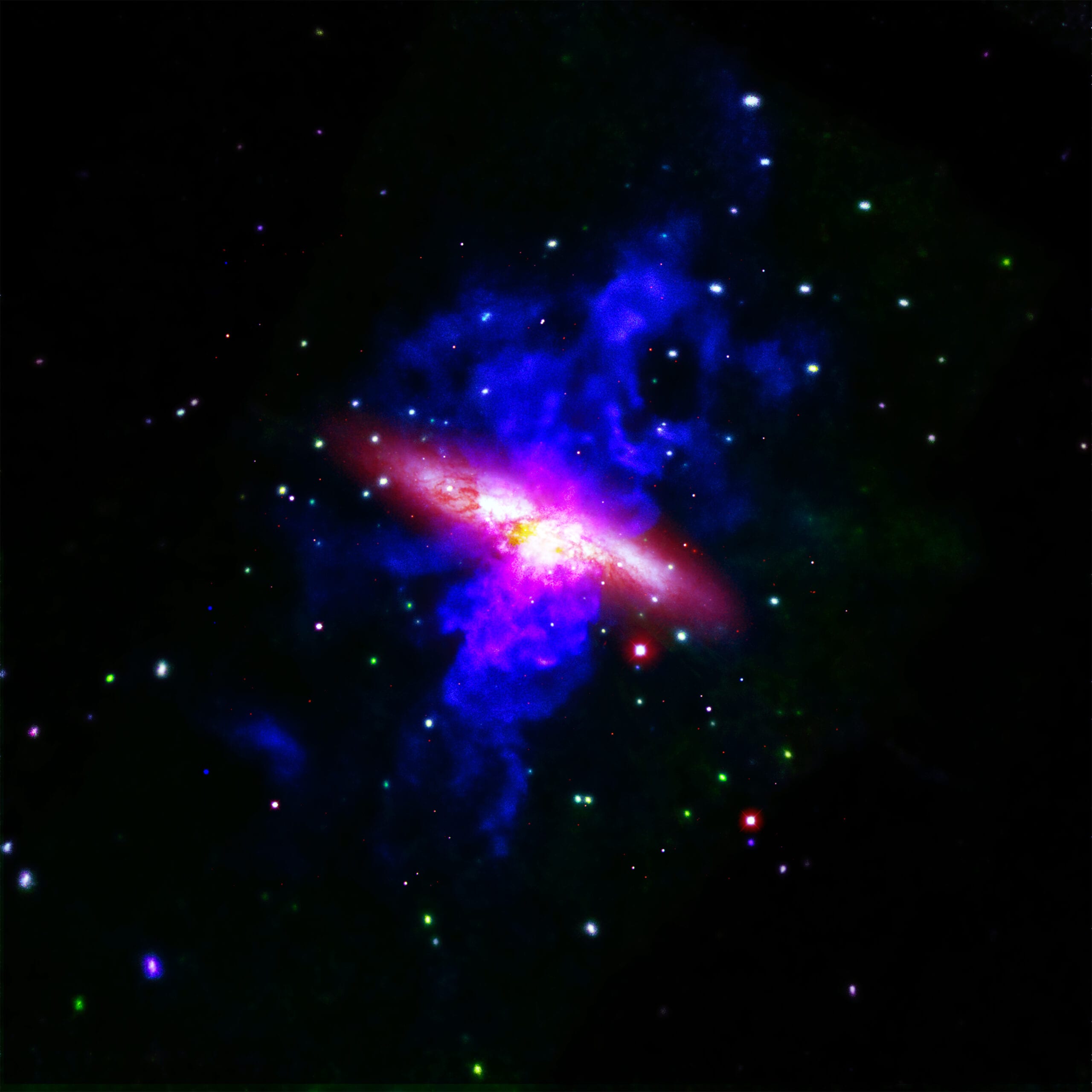
Photo Credit: NASA/CXC
Messier 82, or M82, is giving scientists a glimpse into the process of star formation.
Here’s more about the image from NASA:
X-rays from Chandra (appearing as blue and pink) show gas in outflows about 20,000 light years long that has been heated to temperatures above ten million degrees by repeated supernova explosions.
Optical light data from NASA’s Hubble Space Telescope (red and orange) shows the galaxy.
This incredible album of images is seriously out of this world. The vast expanse of the universe gives me a little bit of hope during this super dark time. It helps remind me that there are things out there far bigger than our own tiny existence here on planet Earth. Plus, it’s comforting to look at other planets in the solar system and realize that – as it stands – Earth is still pretty hospitable.
If you’re feeling down about climate change, check out these dire photos from Venus. They’re sure to help you appreciate the greenery around us that we take for granted.
What are some of your favorite photos from space? Share them with us in the comments below!
The post NASA Captures Amazing New Images of the Universe That Almost Look Photoshopped appeared first on UberFacts.
In early 1990s, NASA sent jellyfish to space to test how spaceflight would affect their development. The jellies did not develop the proper gravity-sensing capabilities and had trouble figuring how to swim around in normal gravity, with abnormal pulsing and movement when returned to Earth.
The post In early 1990s, NASA sent jellyfish… appeared first on Crazy Facts.
On May 2nd 2019, an extremely high resolution image was made from 16 years of observations from the Hubble telescope. This image is the deepest view of the universe, containing roughly 265,000 galaxies and stretches through 13.3 billion years to just 500 million years after the big bang.
The post On May 2nd 2019, an extremely high… appeared first on Crazy Facts.
In 1977 Jupiter, Saturn, Uranus, and Neptune were entering a rare alignment that occurs every 175 years. This happened to be when humans were first attempting space exploration so we were coincidentally able to send Voyager 2 on a flyby of all four planets on its way out of the solar system.
The post In 1977 Jupiter, Saturn, Uranus… appeared first on Crazy Facts.
On March 18, 1965, Soviet cosmonaut Alexei Leonov became the first man to walk in space. The 30-year-old Russian floated outside the Voskhod 2 spacecraft for 12 minutes while connected to a 16ft tether.
The post appeared first on Crazy Facts.
This tale begins with astronaut John Young. The 9th person to walk on the moon, Young enjoyed the longest career of any astronaut before – or after – him at NASA, flying 6 space missions in over 42 years of service.
Yeah. I know.
He flew his first mission in 1985, the 3rd Gemini mission. He and fellow astronaut Gus Grissom named their craft “Molly Brown,” after the Unsinkable Molly Brown, and when NASA suggested that they change it – no need to worry about crashing into the sea, after all – they said fine, they would call it “Titanic” instead.
The “Molly Brown” was the last crew-named spacecraft to lift off on NASA’s watch.
What NASA officials didn’t know was that Young wasn’t done causing trouble in 1985. Not even close.
Before the flight, Young’s friend Walter Schirra gave him a corned beef sandwich, and Young decided to stick it in his pocket and take it along.
You know, just to see what would happen.
He surprised Grissom with it, and his partner took a few bites before the sandwich started to fall apart.
NASA wasn’t happy, because the crumbs from the sandwich could have caused trouble with the ship’s mechanics, though everything turned out fine.
At least, they did until Congress got wind of the situation – they were upset because taxpayer money had been spent on “official food” that was supposed to be evaluated.
Image Credit: NASA
Spoiler alert: a few bites of cold corned beef did not spoil anyone’s appetite.
Young was reprimanded, NASA implemented new rules as far as what astronauts could bring on flights, and Young was reportedly peeved that his stupid sandwich got more attention than all of the hard work and achievements of the men on board.
I guess that’s what you get when you fly by the seat of your corned beef-laden pants.
He died in 2018 at the ripe old age of 87.
The post This Corned Beef Sandwich Made an Illicit Trip Into Space appeared first on UberFacts.
Science nerds are some of the most interesting people, mostly because they usually have an innate curiosity about how the world works, and they love exploring new questions and ideas.
Recently, one person wondered what the record for the fastest-moving manmade object is… and then decided to research the topic until they found the answer.
Because why not? It can be really fun to dig around online and in books until you fully understand a topic or event.
It turns out the fastest object is a manhole cover that was launched via nuclear detonation, and that manhole cover can travel very, very quickly.
You might not even believe just how fast it can go!
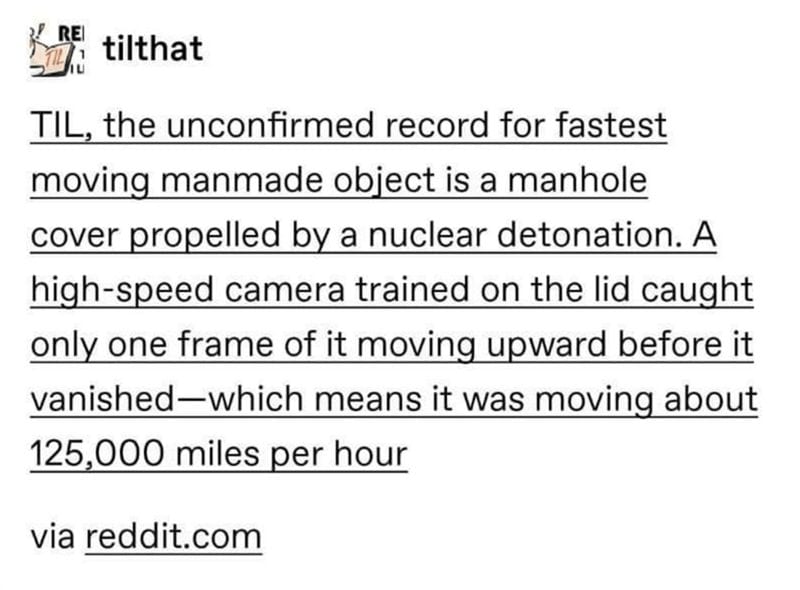
Photo Credit: Cheezburger
Funnily enough, the manhole cover was traveling at such a high speed that it didn’t get caught in our orbit, which means it’s still out there.
It’s pretty wild to imagine that a manhole cover is just rocketing around in space, probably getting faster and faster in the process.
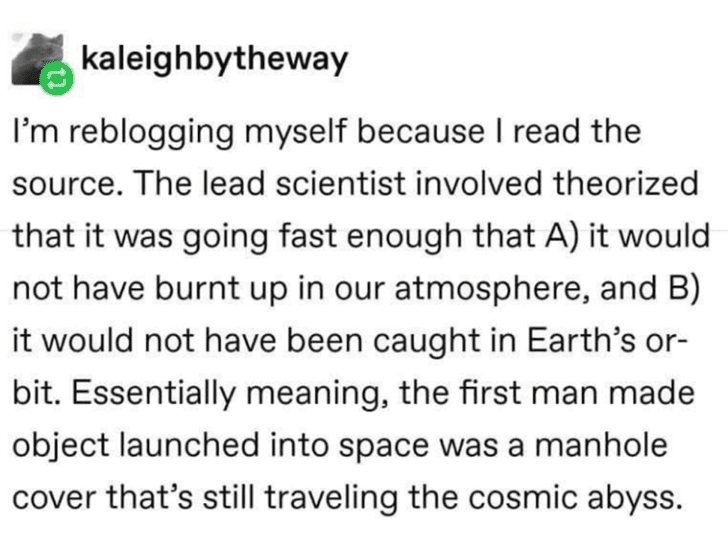
Photo Credit: Cheezburger
If you haven’t figured it out yet, this thing was moving really, really fast.
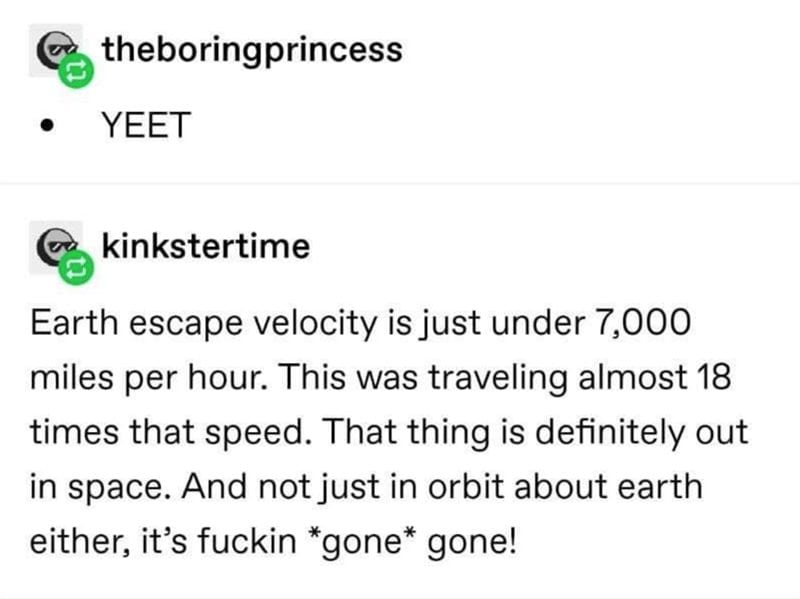
Photo Credit: Cheezburger
Like… super fast. It’s impossible to overstate this fact.

Photo Credit: Cheezburger
In fact, it’s going to so fast that one person theorized it could even anger some aliens if they encounter it.

Photo Credit: Cheezburger
It is pretty amazing to think that such an everyday item could be launched into space and travel that quickly!
Don’t forget to share this one with your friends, especially your friend who love space facts.
Which part is totally unbelievable for you? Let us know in the comments!
The post The (Possibly) True Story of the Fastest Moving Manmade Object Ever That’s in Space…Maybe appeared first on UberFacts.
Astronomers who work on the Sloan Digital Sky Survey have released a brand-new 3D map of the entire universe.
The Sloan Digital Sky Survey is a decades-long project that has only had one goal: to map the universe. Now, it seems that they’ve managed to produce the largest-ever map to date.
Over 100 scientists have been working on the project, and the mapped over two million galaxies and quasars while doing so.
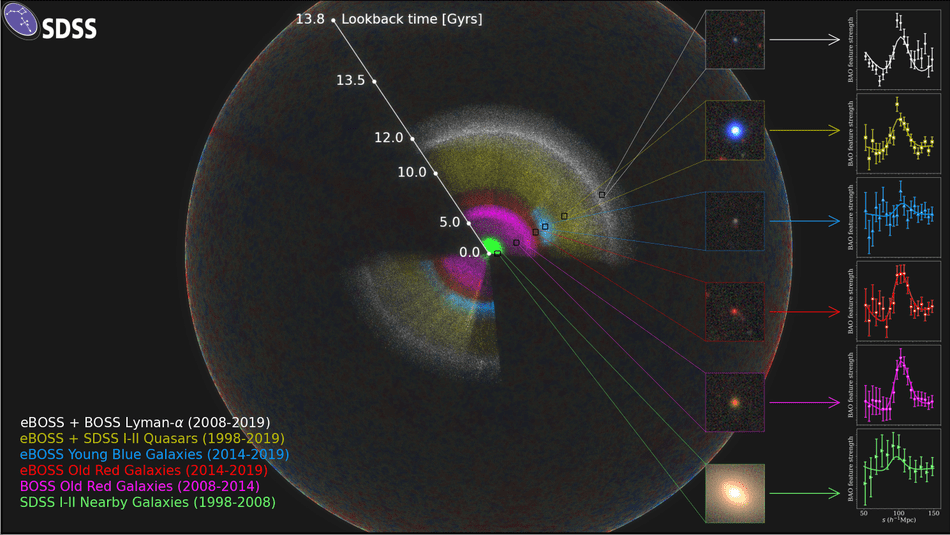
The scientists placed the Earth at the center of the map.
We are located at the center of this map. As we look out in distance, we look back in time.
When looking at this map, we see the light that is arriving on Earth from other galaxies. That light takes a long time to reach our planet. For example, it takes 2.5 million years from light from the Andromeda Galaxy to reach us here on our planet.
The map also shows other galaxies that are different distances from our home planet.

The scientists also explain that they use a “cosmic distance ladder” to figure out how far away a galaxy is.
This method depends on making accurate measurements of distances to nearby galaxies and then moving to galaxies farther and farther away, using their stars as milepost markers.
Astronomers use these values, along with other measurements of the galaxies’ light that reddens as it passes through a stretching universe, to calculate how fast the cosmos expands with time, a value known as the Hubble constant.
All of this going over your head a bit? Yeah, us too.
So here’s a video to explain more…
Isn’t this information amazing? Don’t forget to share the map with your friends, and let us know what you think about it in the comments!
The post Scientists Put Together the Largest Map of the Universe Ever and It Is a Sight to Behold appeared first on UberFacts.
Astronauts Mark Lee and Jan Davis married in secret 9 months before their joint flight to the ISS and didn’t tell NASA until it was too late to train replacements. They are the only married couple to have ever flown in space together.
The post The Only Married Couple To Fly Together In Space appeared first on Crazy Facts.